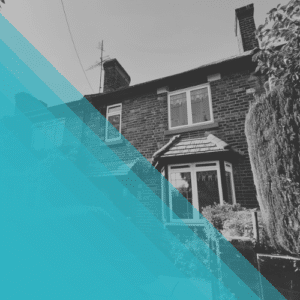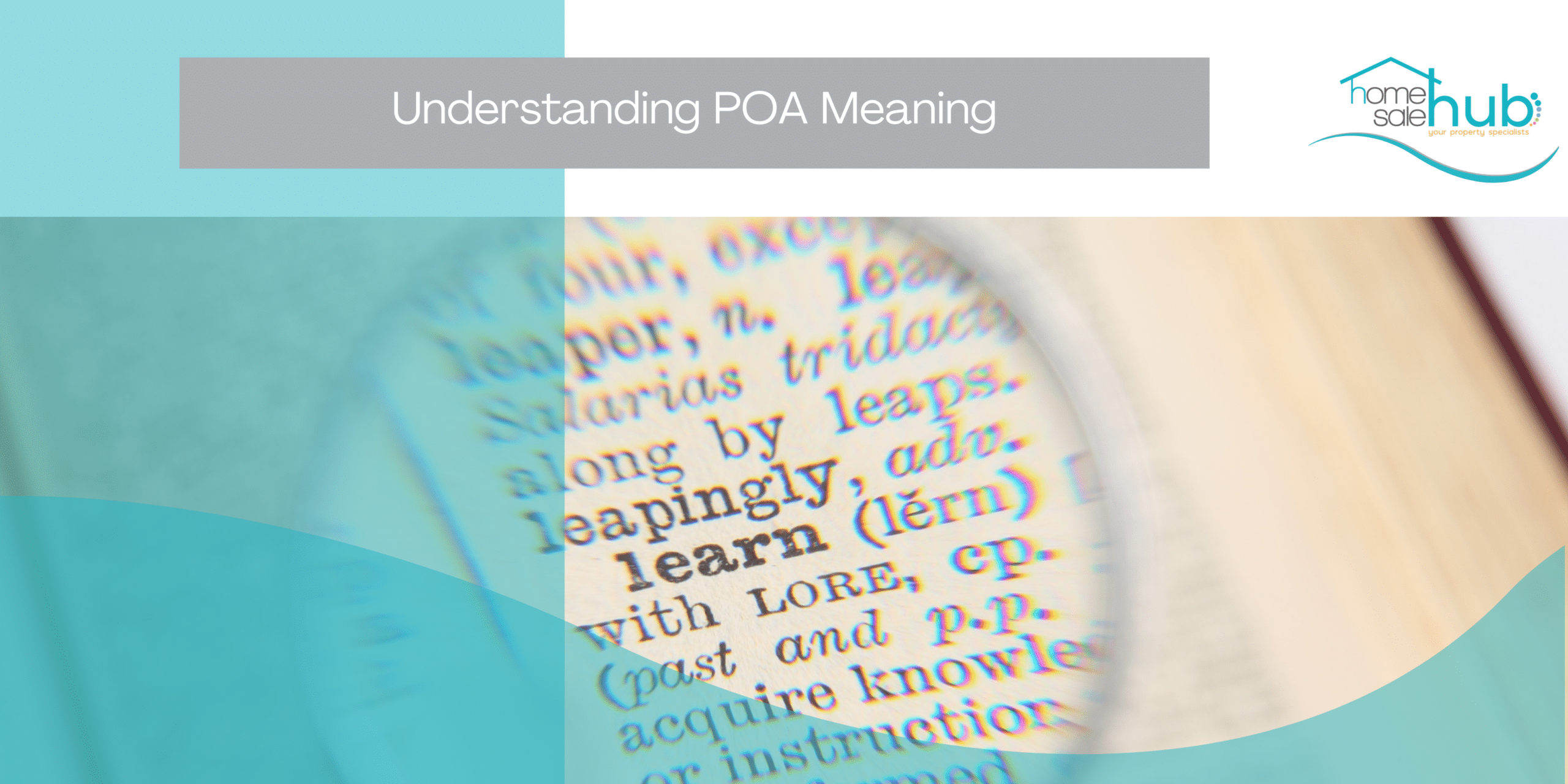Address
38f Goring Rd,
Worthing
BN12 4AD
When browsing property listings, you might come across the term POA, which stands for Price on Application or Price on Asking. Unlike most listings that display a set price, POA means the seller or estate agent has chosen not to make the price public. Instead, potential buyers must contact the agent to find out how much the property is on the market for. This method helps keep the property price confidential.
This practice is often used in high-value sales, but it isn’t limited to luxury homes. There are several reasons why sellers and agents opt for POA, ranging from privacy concerns to marketing strategies aimed at attracting the right buyers. While it can create an air of exclusivity, it can also frustrate those looking for clear pricing upfront.
What is POA?

POA is a method of listing a property where the price is not disclosed publicly, requiring interested buyers to get in touch with the agent for details. This helps keep the price private, especially for high-value properties. Estate agents and sellers use POA for different reasons, including:
- Privacy: Some sellers, particularly those in the public eye, prefer to keep the price of their home confidential. POA ensures that only serious buyers make inquiries rather than casual browsers.
- Marketing strategy: POA can make a property appear more exclusive, drawing attention from buyers who might otherwise overlook it. The idea is that if people must ask for the price, they may be more inclined to engage with the agent.
- Price flexibility: It allows agents to test the market without committing to a fixed figure. If demand is high, they can adjust their approach based on buyer interest.
- Avoiding scrutiny: Sellers might not want their neighbours or family to know how much they are asking for their property, especially if the price is much higher or lower than expected.
- Encouraging conversation: Estate agents benefit from POA because it brings buyers directly into contact with them. This helps agents understand buyer intent and build relationships for future sales.
While POA can work in favour of the seller, it’s not always well received by buyers. Some find it frustrating to have to request pricing details, particularly when there are plenty of other listings available with clear price tags. However, it can also help agents gather information about prospective buyers.
Why do Estate Agents use POA instead of Asking Price?

Estate agents use Price on Application (POA) for several reasons, most of which are tied to marketing strategy, seller preferences, and market testing.
One of the main reasons is exclusivity. When a price isn’t listed publicly, it can make a property feel more prestigious. Properties marked as POA are often handled differently on property platforms like Rightmove and Zoopla. Buyers may be more inclined to inquire, assuming the home is in a higher price bracket or has something special about it. This technique can be particularly effective for luxury properties, where discretion is often part of the appeal.
Privacy is another factor. Some sellers prefer to keep their asking price confidential, especially if they are well-known figures or if they simply don’t want neighbours and family to know what they are expecting to sell for. This can also apply in cases where a seller’s financial situation is sensitive, and they don’t want public speculation over their pricing.
For estate agents, POA provides a way to test the market without committing to a specific price. This strategy involves marking the property as POA to gauge interest. By tracking how many potential buyers inquire about a property and what kind of feedback they receive, agents can gauge demand before settling on an official figure. This flexibility allows them to refine their recommendations to future sellers, ensuring that properties are priced appropriately based on real interest rather than guesswork.
Another advantage for agents is the opportunity to build relationships with potential buyers. Since anyone interested must contact them directly, they can gather details about serious buyers, understand their requirements, and potentially match them with other properties if the original listing doesn’t suit their needs. This process helps agents expand their network and secure future sales.
While POA can work in the agent’s and seller’s favour, it can also put some buyers off. Many house hunters prefer transparency and may bypass a POA listing in favour of one with a clear price.
Disadvantages of POA
While Price on Application (POA) can be a useful tool for sellers and estate agents, it isn’t always well received by buyers. One of the main drawbacks is that it adds an extra step to the buying process. Instead of seeing a price upfront, potential buyers must contact the agent, which can feel unnecessary when so many other listings display clear figures.
For some, this lack of transparency raises concerns about trust. Buyers may wonder why the price is hidden and whether it means the property is overpriced or that the seller is hesitant to commit to a figure. Some buyers may be concerned that the actual price is being concealed. If buyers feel uncertain about the process, it can sometimes lead to deals falling through.
POA can also be a deterrent for those on a budget. Even if the property is within their price range, buyers may assume it’s out of reach simply because the price isn’t stated. This can result in fewer inquiries, meaning sellers could miss out on genuine interest.
There’s also the risk that buyers perceive POA as a marketing tactic rather than a practical necessity. Some assume that if they have to ask for the price, they probably can’t afford it, leading them to scroll past the listing without giving it serious consideration.
While POA can work well in some cases, sellers and agents must weigh these disadvantages carefully. The concept of a secret price can also deter buyers who prefer transparency. If the approach discourages too many potential buyers, it may do more harm than good.
How to Calculate the Value of a POA Property

When a property is listed as Price on Application (POA), it can be frustrating for buyers trying to determine whether it fits within their budget. POA can also obscure any price reductions the property may have undergone. However, there are ways to estimate its value without having to rely solely on the agent’s response.
A good starting point is property listing websites such as Rightmove and Zoopla, where you can compare similar homes in the same area. Even if the price isn’t displayed, the estate agent will have entered a figure into the system, which determines how the property is positioned alongside others. If a POA listing appears between properties priced at £500,000 and £550,000, it’s likely in a similar range.
It’s also useful to research the local market. Looking at recently sold properties in the area provides a benchmark for pricing, helping you estimate what the seller might be expecting. Land Registry data can also provide insights into past sales, offering a clearer picture of how house prices have changed over time.
Beyond location, factors such as property condition, size, and amenities will influence its value. A newly renovated flat in a sought-after area will likely command a higher price than a similar-sized home in need of refurbishment. Checking for features like garden space, parking, and proximity to schools or transport links can also give you a better idea of how much the property might be worth.
While POA listings don’t display prices outright, a bit of research can help buyers work out whether a property is within reach before making an inquiry.
Alternatives to POA
For buyers who find Price on Application (POA) frustrating, there are other pricing methods that offer more clarity while still allowing room for negotiation. Sellers and estate agents often use these alternatives to provide an indication of value while maintaining some flexibility.
A guide price is one of the most common alternatives. This approach provides an estimated value of the property, usually set slightly lower than the expected sale price to attract more interest. It isn’t a firm asking price but gives buyers an idea of what the seller is looking for. Buyers tend to negotiate down from the asking price, often aiming to pay slightly below it.
Another option is “Offers in Excess Of” (OIEO), which signals that the seller is only considering bids above a certain amount. This is often used when demand is high, encouraging competitive bidding among buyers.
For more flexibility, estate agents sometimes list properties with “Offers in the Region Of” (OIRO), meaning they are open to offers around a stated price. Unlike OIEO, which sets a clear minimum, OIRO suggests that reasonable negotiation is expected.
The most straightforward option is a fixed price, where the property is listed at a set amount with no expectation of negotiation. This method is less common but can appeal to buyers who prefer certainty in their budget without having to engage in back-and-forth discussions.
Each of these alternatives provides more transparency than POA while still allowing for strategic pricing. Buyers who prefer to see a price upfront often feel more comfortable engaging with these types of listings.
The Role of the Estate Agent
Estate agents act as the link between buyers and sellers, ensuring the property transaction runs smoothly. Their role goes beyond simply listing homes; they provide expert advice, manage negotiations, and help both parties achieve the best outcome.
For sellers, an agent’s market knowledge is essential in setting a realistic asking price. By assessing recent sales, local demand, and the property’s unique features, they can determine a price that attracts interest while reflecting its true worth.
Buyers also benefit from an agent’s expertise. Those unfamiliar with the home-buying process rely on agents to guide them through viewings, provide details about the local market, and offer advice on making an offer. Being a cash buyer can make a significant difference in competitive bidding scenarios. In cases where Price on Application (POA) is used, agents are the ones who disclose the price upon request and explain how it compares to similar properties.
Beyond pricing and negotiations, estate agents facilitate communication between both parties, ensuring that offers, counteroffers, and legal steps are handled efficiently. Their role is particularly important in complex sales where multiple buyers are interested, or where a seller needs discretion.
A well-connected agent can make the difference between a smooth sale and a drawn-out process, helping buyers and sellers navigate the property market with confidence.
The Impact of POA on the Property Market

The use of Price on Application (POA) in the property market can have a significant impact, both positive and negative. On the positive side, POA can create a sense of exclusivity and intrigue around a property, which can attract more interest and offers from potential buyers. This is particularly effective for unique or expensive properties where the price is not the only factor in the buying decision. The mystery surrounding the price can make the property seem more desirable, encouraging serious inquiries and potentially leading to competitive offers.
However, POA can also create barriers for buyers. The lack of a clear, upfront price can deter bargain hunters who prefer transparency and straightforward comparisons. This can make it challenging for buyers to gauge whether a property fits within their budget, leading to frustration and potentially fewer inquiries. Additionally, the absence of a numeric price can make it difficult for buyers to compare properties and make informed decisions, which can result in a less efficient market overall.
In summary, while POA can be a powerful tool for attracting interest in high-value or unique properties, it can also pose challenges for buyers seeking clarity and transparency in the property market.
Estate Agent Sales Terms
Estate agents use a variety of sales terms to describe properties and attract potential buyers. Understanding these terms can help buyers navigate the property market more effectively:
- OIEO (Offers In Excess Of): This term is used when the seller wants to receive offers above a certain price. It indicates that the seller is looking for bids higher than the stated amount.
- OIRO (Offers In the Region Of): This term is used when the seller is open to receiving offers around a certain price. It suggests that the seller is willing to consider offers close to the listed amount.
- Guide Price: This term provides an estimated value of the property, usually set slightly lower than the expected sale price to attract more interest. It gives buyers an idea of what the seller is looking for without being a firm asking price.
- Under Offer: This term is used when a buyer has made an offer on a property and the seller is considering it. It indicates that negotiations are underway but not yet finalized.
- Sold STC (Sold Subject To Contract): This term is used when a sale has been agreed upon, but the contract has not yet been signed. It means that the property is in the process of being sold, pending the completion of legal formalities.
By familiarizing themselves with these terms, potential buyers can better understand the status and expectations associated with different property listings.
What does POA mean in Rental Properties?

In the rental market, Price on Application (POA) works in much the same way as it does for properties listed for sale. Instead of displaying the monthly rent, landlords or letting agents require prospective tenants to inquire directly about the price.
POA is particularly common in new developments, where multiple units may be available at varying rental prices. Instead of listing each property separately, agents use POA to encourage inquiries, giving them a chance to discuss options with tenants and match them with the most suitable flats.
It is also used in high-demand areas, where rental properties are snapped up quickly. By keeping the rent undisclosed, agents can gauge interest and potentially adjust pricing based on demand. Unlike sales listings, where POA is mostly seen in the luxury market, rental properties at all price levels may use this approach.
While POA can create a sense of exclusivity, some tenants may find it off-putting, preferring to know the price upfront rather than having to contact an agent. However, in competitive rental markets, where demand often exceeds supply, this pricing method remains a common practice.
Tips for Potential Buyers
If you are a potential buyer looking at Price on Application (POA) properties, here are some tips to help you navigate the process:
- Do your research: Look at online listings and comparable properties to get an idea of the market value of the property. Websites like Rightmove and Zoopla can provide valuable insights into similar homes in the area.
- Contact the estate agent: Reach out to the estate agent to ask about the price and any other details about the property. This direct communication can provide clarity and help you gauge whether the property fits within your budget.
- Be prepared to negotiate: POA properties often involve negotiation, so be prepared to make an offer and negotiate the price. Understanding the local market and recent sales can give you a stronger position in negotiations.
- Consider working with a real estate agent: A real estate agent can help you navigate the process and provide guidance on making an offer. Their expertise can be invaluable, especially when dealing with POA properties.
- Don’t be afraid to walk away: If you’re not comfortable with the price or the negotiation process, don’t be afraid to walk away from the deal. There are plenty of other properties on the market, and it’s important to find one that meets your needs and budget.
POA properties can be a good opportunity for buyers looking for unique or expensive properties. However, it’s important to be aware of the potential drawbacks and approach the process with caution. By following these tips, you can make more informed decisions and increase your chances of finding the right property.
Conclusion
Price on Application (POA) is a widely used pricing method in the property market, allowing sellers and landlords to keep asking prices private while attracting interest from potential buyers and tenants. It is often seen as a way to create exclusivity, encourage direct inquiries, and provide flexibility in pricing.
However, the lack of transparency can also deter buyers and tenants who prefer to see a clear price upfront. Some may be hesitant to engage with a listing that requires additional steps just to find out whether it fits within their budget. In some cases, POA can lead to frustration or even a loss of trust between parties.
For those navigating the property market, understanding how POA works—and when it might be beneficial or a potential drawback—can help in making informed decisions. Whether buying, selling, or renting, knowing the reasoning behind POA listings allows for a more strategic approach when engaging with estate agents and property listings.


